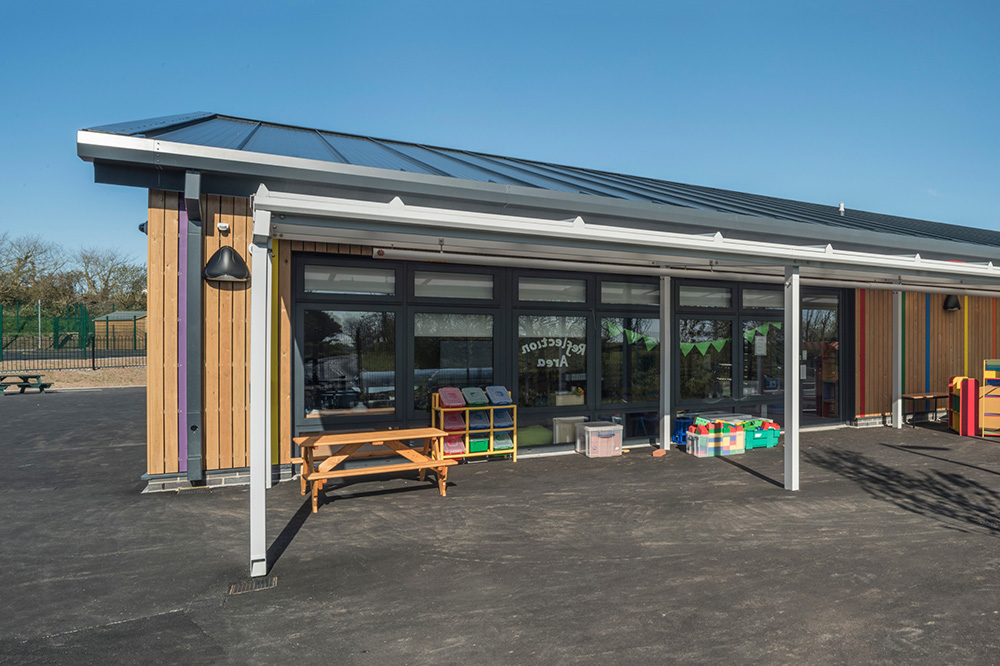Educational Building Design – Tips and Ideas for Architects
As schools become increasingly overfilled and universities take on more students than ever, focus is turning to educational building design and how effective design maximises space while reducing costs. Many schools and universities are looking to modernise – incorporating contemporary technology while reducing environmental impact.
Here we have identified key areas for architects to consider when designing educational buildings.
Understand the Vision
Before putting pen to paper and beginning a design, it is imperative you understand the brief and how to fulfil the educational vision of the building. Modern builds are likely to have environmental aims, so it is vital your design reduces environmental impact while maintaining a well-functioning setting for learning.
Educational buildings often embody concepts; for example, glass walls symbolise openness and visibility. Many educational institutions are geared towards communities, keen to be involved and accepted instead of an individual entity. This inclusion should be considered in the design if desired.
Perhaps you are asked for unique learning spaces, areas for specific functions, or to generally modernise a building. You should always put the client’s vision at the forefront of your design.
Appearances
Though an educational building is not all about looks, a striking façade is sure to help. The presentation of a school or university should reflect the values of the institution. A modern outside represents forward thinking and innovation on the inside.
An eye-catching, engaging building is sure to inspire both the students and the staff. Detailed design, such as timber cladding or bold metal accenting, will make your building unforgettable.
Feeling inspired? Check out our case studies.

Spaces
Trends in educational building design follow trends in education. Educational institutions are increasingly favouring collaborative work, attracted to designs featuring open spaces, social areas, and changeable layouts. Contemporary educational buildings utilise both large and small spaces to create lively community hubs, sections for focussed groups, and snugs for independent study.
Consider access to outdoor areas, allowing for collaboration or study in fresh air utilising daylight. Mixing spaces between inside and outside will diversify the building and break up any dull or mundane areas.
A recent trend for universities is ‘incubators’, popular in higher education for their capacity to combine education with industry. Modelled on shared workspaces and start-up offices, incubators encourage networking and foster entrepreneurialism in students. Consider your client’s vision and desire for innovation led design in their institution.
Create a Perfect Learning Environment
In May 2016, the Royal Institution of British Architects published a report outlining how a better design leads to better learning. The report summarised failings of educational buildings previous, and improvements for the future, including how to prevent the current wasting of £150 million per year due to poor design. Read the full report here.
Studies conducted to support the report found substantial evidence that natural light is key to reducing stress and increasing productivity. Similar was found for the presence of timber; finding it to be influential over student behaviour, engagement, wellbeing and attainment. Evidently, good design gives good results.
Why not consider timber cladding for your educational building design? Not only will you be creating a striking building, but also positively affecting health and wellbeing.
Consider Costs
Clients love to know their project is “cost effective” but what does this really mean?
For you as an architect, it means ensuring any money spent is not wasted, through lost heat due to poor insulation, for example. Consider incorporating natural ventilation into your design, such as exposed concrete roof for natural ventilation and heat retention.
Sustainable solutions can help keep costs low and ensure longevity without costly maintenance. Rainwater collection systems are popular for supplying water for toilets and irrigation, as are biomass boilers for heating, and solar panels for sustainable power.
Timber cladding is an effective insulator, with timber retaining heat far better than concrete, steel, and aluminium. Consider sustainable solutions in your building design and your client will be delighted with reduced environmental impact, as well as cost effective energy management.

Environmental Concerns
With the world becoming more environmentally conscious than ever, incorporating sustainable materials and environmentally considered concepts into your design is crucial. Contemporary buildings should strive to run efficiently without massively impacting the environment, with material choice creating a sustainable legacy.
Concrete, a popular building material of past, releases CO2 into the atmosphere, so architects are looking to more environmental alternatives. Ultimately, exceedingly sustainable materials such as straw bales are unrealistic for most builds. However, a highly sustainable material widely available and viable is wood. Incorporate this carbon neutral building material into your design and you will be doing your bit for the environment.
Vital to sourcing timber is ensuring it is grown and harvested sustainably. Here at NORclad, we supply PEFC and/or FSC certified timber. There certifications evidence the timber comes from a sustainable source and promotes sustainable management of forests. Stimulate environmentally conscious thinking in your educational building design to create a long-lasting impact.
Legacy
Finally, to ensure a future of learning in a bespoke environment, designed to fit a long-term vision of education, your building design must last the ages.
Whether you provide a modern design to reflect an everchanging world, a haven dedicated to innovative collaboration, craft an environmentally conscious development, or all of the above, give your building a legacy.
Break outside the concrete mould to create a unique and striking building. Reflect values and visions in your tailored design to motivate. Inspire the next generation to innovate, create and explore in their novel engaging school/college/university.
Learn More With NORclad
We at NORclad are proud to supply sustainably sourced timber cladding for your next build. With the capacity to treat against fire protection and decay, we provide a 30-year warranty against rot and decay. Our experts have over 40 years’ experience in providing and giving specialist advice on cladding, as well as aiding bespoke designs exactly as clients envision.
Contact us today and find out how we can improve your next build.


















